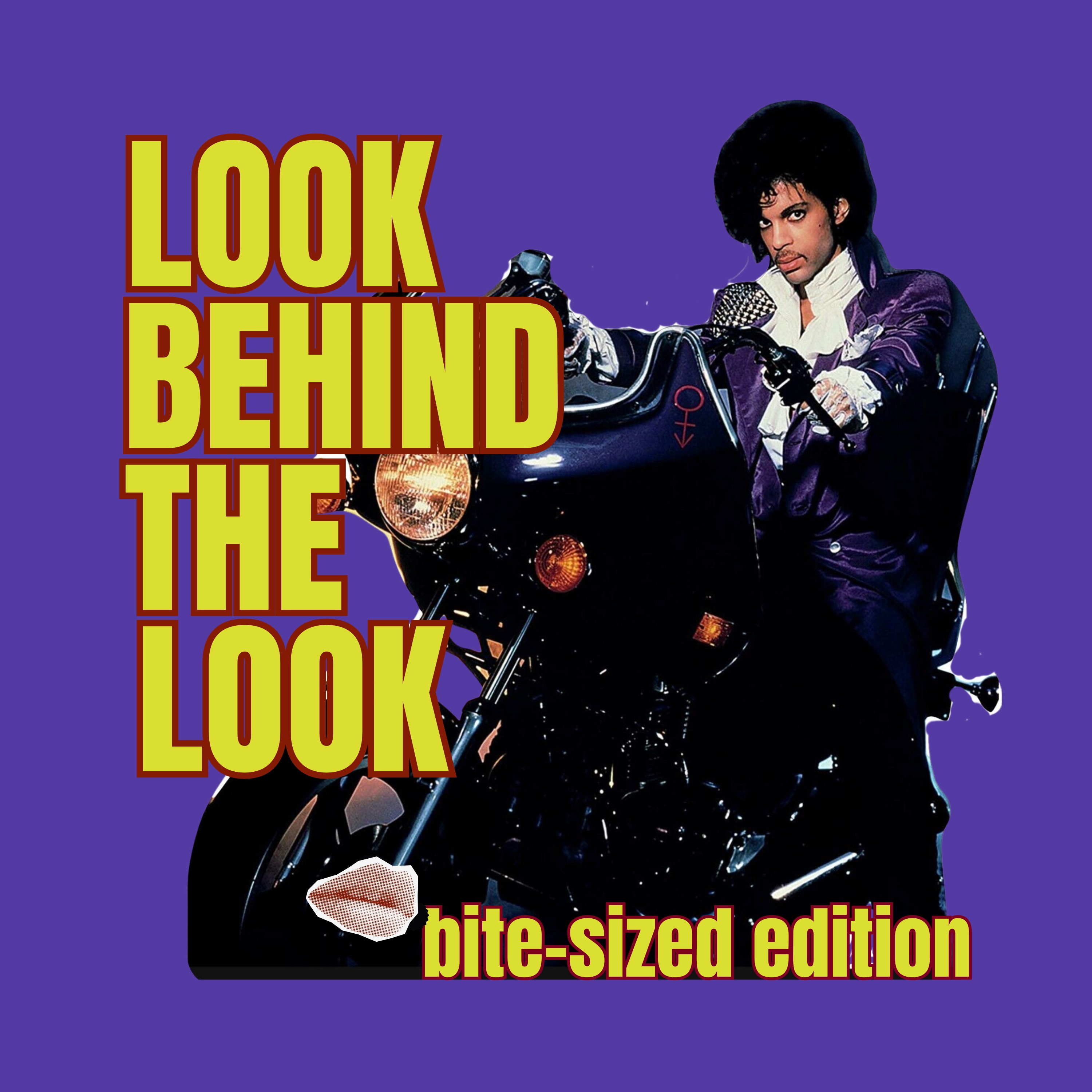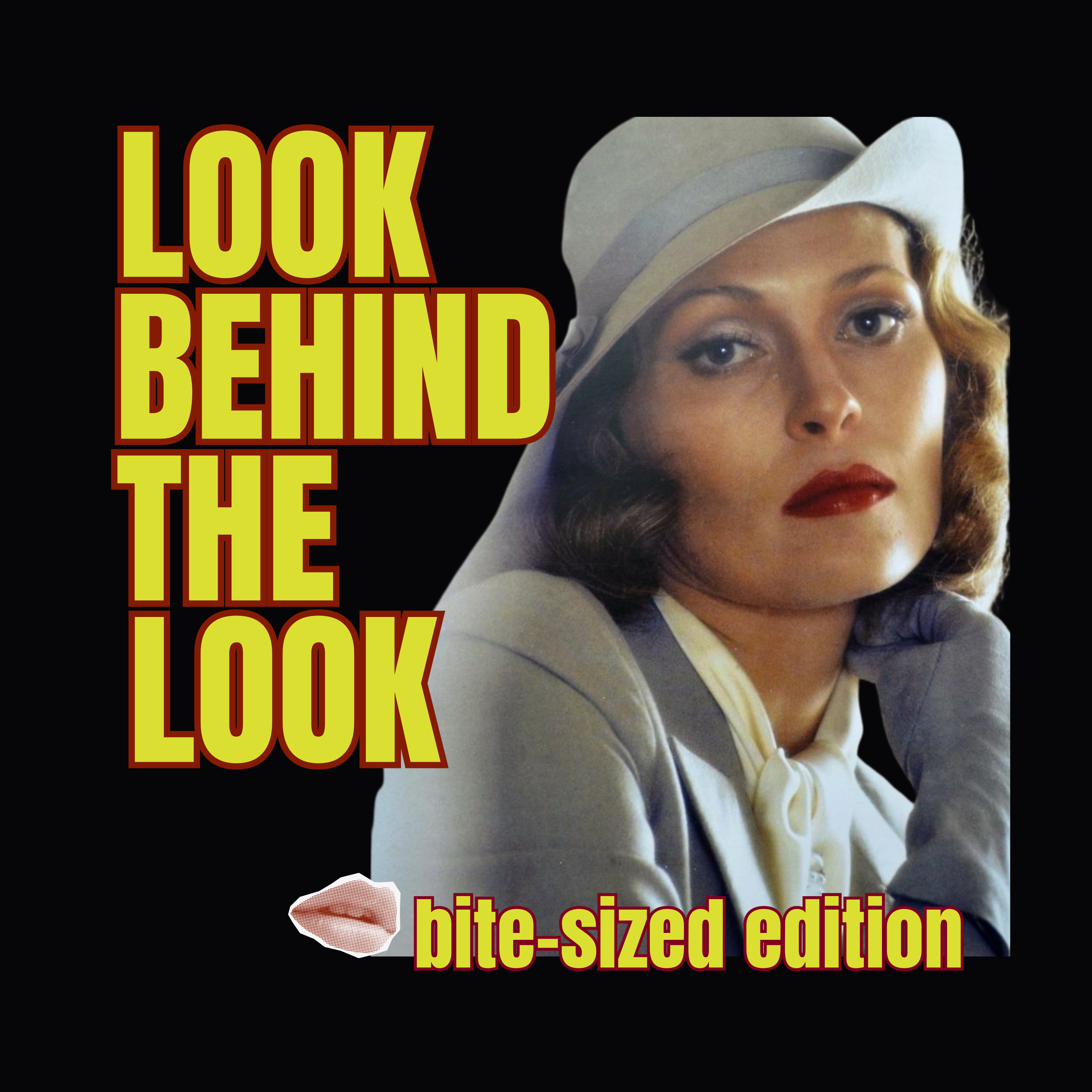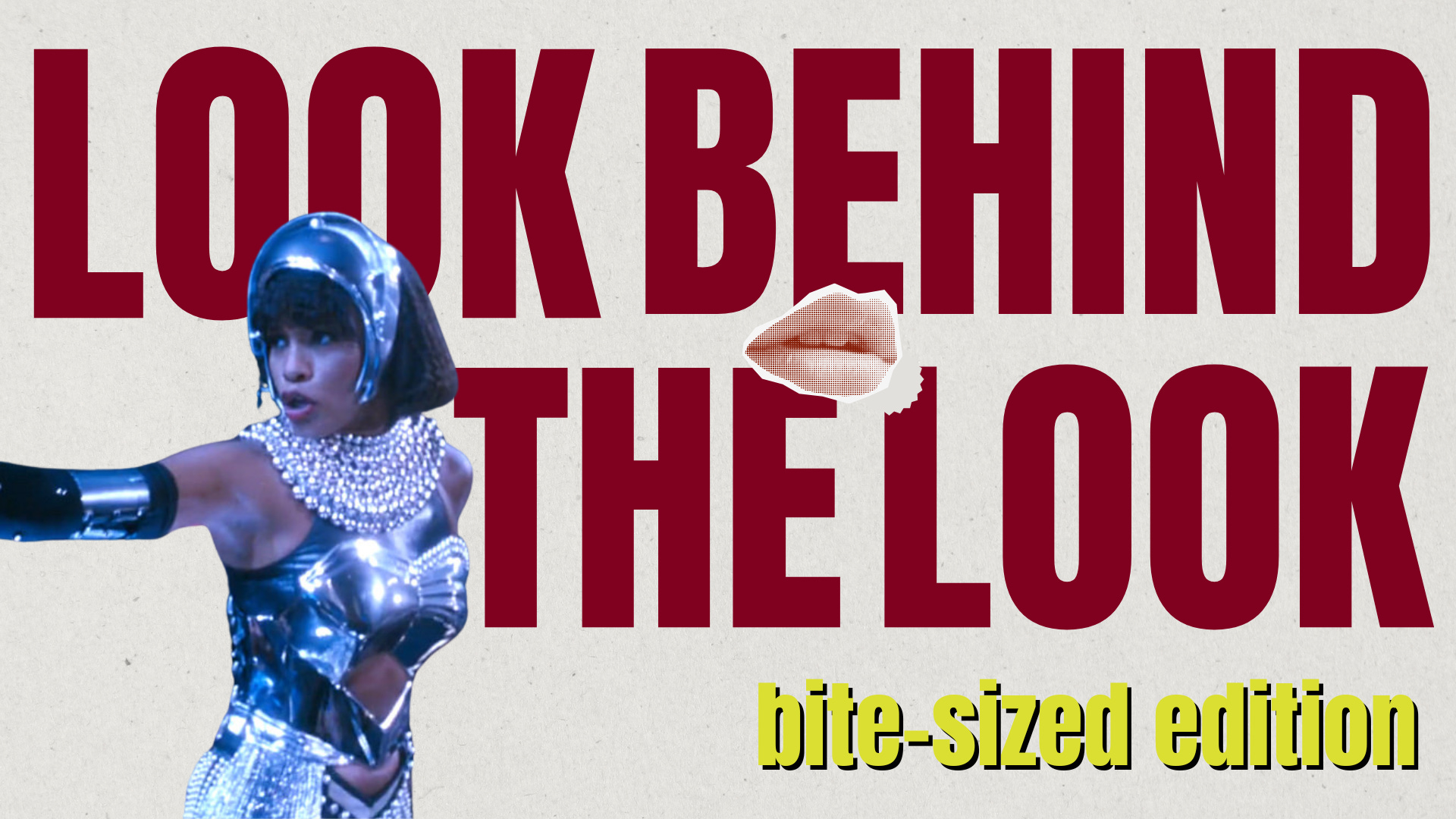The Spike Lee Joint GIRL 6 | Desperately Seeking Theresa Randle

In this Bite-Sized Edition of Look Behind the Look, we’re diving deep into one of Spike Lee’s most overlooked and most fascinating films: Girl 6 (1996).
This isn’t just a story about a phone sex operator—it’s a layered exploration of race, femininity, exploitation, identity, and survival in an industry that wasn’t built for Black women. Featuring a groundbreaking soundtrack by Prince and a stunning performance by Theresa Randle, Girl 6 was misunderstood when it was released but today, it deserves a second look.
We break down:
— Why Girl 6 flopped
— How it critiques the entertainment industry
— The visual power of Theresa Randle’s 20+ wigs
— The underrated genius of the all-Prince soundtrack
— And how the film’s quiet ending might be its loudest statement
Currently unavailable to stream, Girl 6 is a hidden gem we had to go old-school to revisit. So grab a friend, track down a copy, and let’s unpack this bold, misunderstood Spike Lee joint together.
Let us know in the comments: Have you seen Girl 6? What stuck with you? What film should we break down next?
 Don’t forget to subscribe for more bite-sized beauty, film, and cultural deep dives.
Don’t forget to subscribe for more bite-sized beauty, film, and cultural deep dives. Follow @lookbehindthelook on Instagram & TikTok for more behind-the-scenes content.
Follow @lookbehindthelook on Instagram & TikTok for more behind-the-scenes content.
Welcome back to another bite-sized episode of Look Behind the Look. Today, we're back with another obscure cinema excavation exploring Spike Lee's 1996 film, Girl 6. The film offers a unique take on the world of phone sex operators through the eyes of an aspiring actress in New York City and, of course, so much more than that. We’ll explore how this film fell into obscurity...and the layered messages on race and female exploitation.
Despite its ambitious narrative, the film received mixed reviews upon release and was a commercial disappointment, grossing approximately $4.9 million against a $12 million budget. Girl 6 was dismissed so hard when it came out; it's like it just vanished from Spike Lee's filmography. Reviewers like The Washington Post's Rita Kempley described it as "little more than a profane litany punctuated by Oscar-caliber orgasms," while the Post's Desson Howe stated that "it's enough to reduce expectations over him forever."
Even when discussing He Got Game two years later, Spike wouldn't mention Girl 6…That's how much people sidelined it. It's wild because after Girl 6, Spike didn't make another film centered on a female perspective until Chi-Raq in 2015, almost 20 years later. You have to wonder if the reception to Girl 6 made Spike pull back from telling stories about women, especially Black women, navigating systems that weren't built for them. Girl 6 is one of Spike’s most overlooked films, but also one of the most fascinating. That’s exactly why it deserves a closer look behind the look.
A Cultural Reassessment
In 1996, people didn't know what to do with Girl 6. It barely made a dent at the box office, critics were lukewarm at best, and ultimately, it faded into obscurity. But here's the thing—Girl 6 wasn't a failure. It was a film about performance, sex, race, capitalism, and identity. It didn't fit the mold Hollywood—or even Spike Lee fans—wanted it to fit.
This was Spike's first time directing a script he didn't write. The screenplay came from Pulitzer Prize-winner Suzan-Lori Parks, and what they created together was something totally different from the more straightforward sociopolitical narratives people had come to expect from Spike. Instead of overt protest, Girl 6 gives us a quiet, messy rebellion in the form of one Black woman trying to survive the film industry without selling her soul.
Theresa Randle plays Judy, a struggling actress who ends up working as a phone sex operator to make ends meet. And that premise could've easily become male-gazey or exploitative in the wrong hands. But it doesn't. This is a story about the male gaze, not one that indulges it. The camera doesn't leer. It's observant. It's empathetic. It's watching Judy navigate objectification. Beyond general objectification, it shows how she manages which specific forms of objectification she subjugates herself to, like being told by her boss, Lil played by a perfectly cast, Hollywood legend, Jenifer Lewis, she needs to sound “Caucasian” on the phone, because that’s what “the client likes.”
The film also drops in these surreal, meta moments that throw you off, especially the interspersed news storyline of the young black girl who survived falling down the elevator shaft in her building, but that's the point. It draws a direct line from girlhood to adulthood—how young Black girls are burdened from the start with invisibility, impossible standards, and stereotypes they’re expected to navigate alone just to survive. We see Judy auditioning for roles where she's told to be more "urban," more "real," while directors like Quentin Tarantino, in his now-infamous cameo, barks at Judy with lines laced in microaggressions that escalate—into full-blown aggression, unchecked racism, and flat-out exploitation as he demands she take her top off on camera. It’s violent in its familiarity. And that’s the point. Girl 6 doesn’t flinch—it forces us to sit in the discomfort, to confront how easily Black women are dehumanized under the guise of “opportunity.” This isn’t just a scene. It’s a reckoning that begins Judy’s arc. It’s Spike and Suzan-Lori Parks holding up a mirror and asking, ‘How many times has this happened—and how many times did we call it art?’ or better yet "This is what you do to Black women when you 'give them a chance.'"
And that’s why the ending hits so hard. Because after everything—after all that growth and pain and disillusionment—it’s gutting to see Judy go back to Shoplifter. It’s framed like a reunion, maybe even a resolution—but it isn’t. It’s a return to something familiar. Something that once had control over her.
And when she heads to L.A. for her so-called fresh start, she walks right into the same kind of exploitative audition that launched this whole journey. The loop restarts. But this time—she doesn’t freeze. She doesn’t stay quiet. She doesn’t submit. She assertively leaves. That moment shifts everything. Because even though the circumstances haven’t evolved, she has. It’s not loud. It’s not celebrated. But it’s powerful. It’s self-possession. It’s Judy refusing to play the part again, even if the script is exactly the same.
So no, the ending isn’t tied up in a bow. But it’s not hopeless either. Girl 6 isn’t offering a fantasy of escape—it’s showing us what resistance looks like when the world and the people around you won’t meet you halfway. Quiet, deliberate, exhausted… but still yours.
So why did Girl 6 flop? Because audiences weren't ready for a Black feminist art film disguised as a phone-sex dramedy. It didn't check the boxes. It wasn't "important" in how people expected a Spike Lee joint to be. The film's portrayal of Judy's experiences resonates with contemporary discussions about the empowerment and exploitation inherent in everything we've come to understand about performance, labor, and digital sex work (hello, OnlyFans), Girl 6 feels prophetic. In recent years, Girl 6 has been reassessed for its ahead-of-its-time commentary on sex work and female agency.
It's time we stop calling it a misstep. Girl 6 didn't fail. We did—for not seeing what it was trying to show us. With all that said, I do still think it's worth critiquing how a man directing the film despite having a female screenwriter is a statement and impression in and of itself that is left upon this film, and that’s something we’re still unpacking today.
The wigs, costuming, and futuristic sets are all intentional and impeccably designed. Judy is a chameleon, adapting to the fantasies projected onto her. She tries never to lose herself, but as the film progresses, it becomes a hard line to walk. And Randle does it brilliantly. Her performance is nuanced, internal, and often quiet—maybe that's why it got overlooked. People expected something louder. But Judy's strength is in her stillness. I paused the film so many times in awe, wondering - how we didn't get Theresa Randle leading dozens of films post-Girl 6. Her performance has always stuck with me. She is the film.
Girl 6 is a wig-lover's dream. Theresa Randle wears over 20 different wigs and styles throughout the film, and each one feels like a window into her state of mind or her persona at that moment. Her hair isn’t just flair—it’s fashion, character, power, and commentary all in one.
There's the long honey-blonde crop she rocks in the phone booth—classic "sex symbol" vibes and we see everything from her an ode to Dorothy Dandridge, bantu knots, finger waves, a full-on Foxy Brown afro—it's a whiplash of transformations that, if you blink, you might miss one. Her hair becomes armor, a mask, a performance. And what's genius is that the wigs and styling reflect the emotional tone of each scene without her having to say a word.
It also speaks to the fantasy that phone sex work sells. Every call, every client, is a role she steps into. And Theresa's ever-changing look mirrors that idea—who she is depends entirely on who's on the other end of the line and what they're paying for.
Plus, let's give some flowers to the hairstyling team. There is not much information out there about who exactly was responsible. I tried to get in touch with Lisa Hazell, but could not reach her for an interview. The hair designs gave Theresa an entire visual vocabulary of Black femininity, expression, power, seduction, and identity.
Theresa Randle played Judy, the lead role. Before this, Randle had appeared in supporting roles in Lee's "Jungle Fever" and "Malcolm X." Her performance as Judy marked her first leading role, showcasing her range and depth as an actress.
And while a lot of this film wasn't exactly the norm for Spike, he still had a role, as he often does—but this time, it feels especially personal. He plays Judy's cousin and best friend, Jimmy, a comic book nerd obsessed with blaxploitation and sports memorabilia. It's sweet and totally feels like a little bit of an opportunity for Spike to get all his Brooklyn Dodgers gear into the production design. He's one of the only people in her life who doesn't sexualize Judy, who just wants to hang out and talk about old-school movies. It’s giving Letterboxd boyfriend energy… uh if your boyfriend was your cousin and just wanted to debate Pam Grier films over pizza. Their friendship grounds the film, a reminder of who Judy is underneath all the wigs and roleplay.
The opposite of Jimmy is Isaiah Washington’s character—Judy’s ex, known only as “Shoplifter.” And that name alone tells you everything. He’s not even given the dignity of a real identity—just a label, a behavior, a red flag. He’s controlling in the way so many men are: smiling, supportive on the surface, but constantly trying to reshape her into someone more manageable. He pushes her to get a “real job,” but what he really wants is her dependence. He wants her small.
The tension between them is always there—quiet, but constant. And the way Spike shoots those scenes, you can feel the power imbalance. It’s intimate, but it’s not safe. These aren’t just moments between two people with history. These are scenes about how easily women—especially Black women—are asked to compromise themselves in exchange for stability, approval, or love that’s conditional.
Both of these male characters exist to show us different versions of masculinity—Jimmy is supportive, if a little clueless, and Isaiah's character is the opposite: demanding, judgmental, and ultimately part of the reason Judy needs to reclaim her voice in the first place.
The film is peppered with notable cameos, adding layers of meta-commentary. As mentioned previously, Quentin Tarantino appears as the self-absorbed director, and this collaboration, interestingly enough, occurred before the well-documented disagreements between Lee and Tarantino over the use of racial slurs in cinema.
We also get Halle Berry, Debi Mazar, John Turturro, Ron Silver, John Cameron Mitchell, and Michael Imperioli giving their best, if not strangest, character acting bits to the film.
Other notable appearances include Madonna as the competing strip club owner. She looked insanely good—possibly the best she’s ever looked, and that’s saying a lot for someone who literally invented iconic beauty in the 80s and 90s—and, of course, supermodel Naomi Campbell as a fellow phone sex operator, taking on a more demure and reserved role.
Pete Travers at Rolling Stone called Girl 6 "the worst movie Spike Lee has ever made," one that "[resorts] to all-star cameos to disguise structural shortcomings." Still, I believe these cameos contribute to the film's commentary on fame, exploitation, and the blurred lines between reality and performance.
I could never go without mentioning one of the film's most essential elements, being its soundtrack, composed entirely of songs by Prince. You can't say that about any other film outside of Purple Rain. The entire soundtrack is Prince. Yup. Not just a song or two—the whole thing. And it's not a greatest-hits situation either; We're talking deep cuts, unreleased tracks, B-sides, and songs he gave just to this movie. "She Spoke 2 Me"? Unreal. "Don't Talk 2 Strangers"? Are you kidding? These weren't just throwaways—he curated a whole vibe for Judy's world, and I can't even believe we aren't talking about this every day.
Prince was famously selective about who he worked with, and it says a lot that he said yes to this film. You get the sense that he understood what the story was about—performance, femininity, identity, power. And that's all over his music, too. Prince elevates the whole damn film. That's the kind of creative alignment that doesn't happen often. Honestly, the Girl 6 soundtrack is one of the most slept-on parts of Prince's catalog—and of 90s cinema in general.
How this happened still blows my mind and definitely leads me to believe that, aside from Spike distancing himself from the film, the complexity of continuing to secure rights to Prince's catalog may be why we haven't been able to stream the film. That's a whooooole other can of worms to dive into for another day…But I will get to the bottom of it.
Girl 6's unique collaborations, themes, and the conversations it continues to inspire about representation, exploitation, and agency for Black women and in the entertainment industry are why it remains a fascinating entry in Spike Lee's filmography. Although its approach to these themes may have been clunky, convoluted—dare I say, disjointed—it’s 1000% worth watching, studying, and taking the time to understand the story beyond traditional narrative form.
Unless you own a VHS or DVD copy, it's a shame you can only find it for $100+ on eBay right now. Kelli and I mailed the DVD back and forth like it was 2006 to study and put this episode together. So, grab a friend or two and create an old-school Netflix sisterhood of the traveling DVD and watch for yourselves. If you do track down a copy, tag me @lookbehindthelook—I want to see your setups. As always, we love hearing your thoughts, what you want to hear more about, and what films you’d like us to dive into next.
Thank you for joining me on another bite-sized episode of Look Behind the Look. Until next time...
**At the time that I recorded this, the DVDs were $80-$100 on ebay but now it looks like it jumped to $225-$350! Keep your eyes on those DVD bins at the vintage stores, people!
written by Kelli Reilly


























